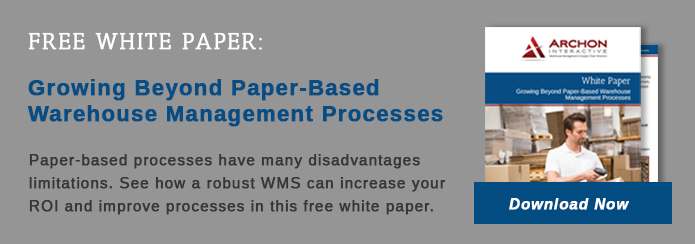 Paper-based warehouse management not only has a negative impact on warehouse efficiency, but it also presents many opportunities for human error. On an individual level, there is very little control over the paperwork each team member is filling out. Plus, without a computerized system cross-checking and verifying inputs, it takes much longer to identify errors and resolve them. In many cases, they go unaddressed altogether.
Paper-based warehouse management not only has a negative impact on warehouse efficiency, but it also presents many opportunities for human error. On an individual level, there is very little control over the paperwork each team member is filling out. Plus, without a computerized system cross-checking and verifying inputs, it takes much longer to identify errors and resolve them. In many cases, they go unaddressed altogether.
Lack of Consistency
The first reason companies with paper-based warehouse management struggle with warehouse efficiency is that each individual fills out paper forms in a different way. Often, team members all have a different understanding of how the form should be completed, or they may have all been trained on the paperwork in different ways. Blank lines, missing pages, and partial data all make it difficult to reconcile details at the end of a shift.
Lack of Real-Time Verification
Another major concern is the fact that any error in writing won't be caught because there is no way to verify the information. This means that inventory quantities are not being actively maintained, and you could wind up short. It also makes it possible for individuals to put products away in the wrong locations or pick the wrong product for an order. Not only will that, but there is no way that a red flag can be raised. If the rest of your team isn't paying attention down the line, the wrong product could end up in the customer's hands, and now you are forced to process a return and try to locate the correct product. Each time an error is made, it could remain in the system for days or weeks before anyone realizes that something is wrong.
Inability to Troubleshoot
Often, when one error is found, there are several more under the surface. If a single employee simply does not understand how the paper-based system works, or if they make a legitimate error in counting or product recognition, their error could be indicative of a larger issue. Unfortunately, with a paper-based warehouse management system, it really isn't possible to determine whether each error is part of a larger trend or not, so efficiency suffers. By contrast, a WMS automatically flags errors and gives the team member immediate feedback so that they can be put back on course.
There is no way to overcome the capacity for human error. Even the most diligent of workers can transpose numbers or misplace an item. The goal is to minimize these errors by allowing a WMS to handle all of the fine details and give specific directions for better results. The software reduces the number of mistakes by validating activities and keeps errors that do occur from becoming long-term problems.




